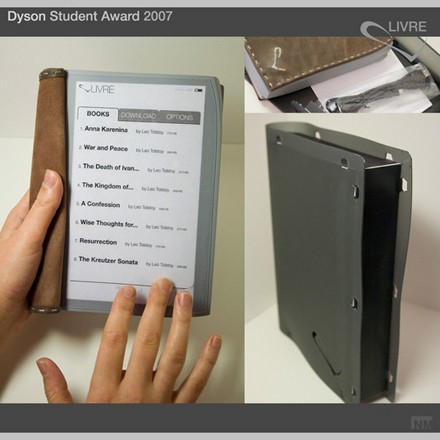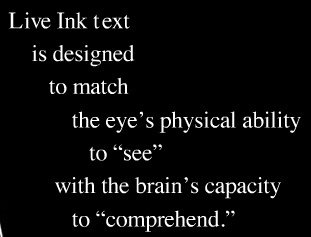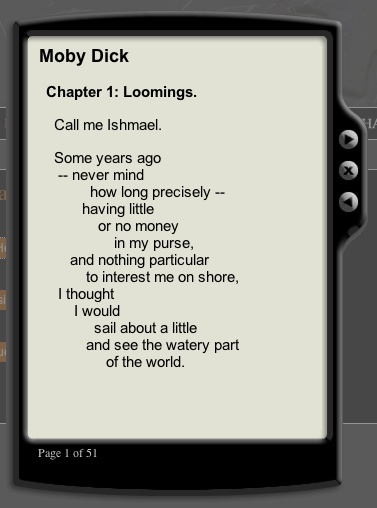So Noah’s just wrapped up the blog peer review of his manuscript in progress, and is currently debating whether to post the final, unfinished chapter. He’s also just received the blind peer reviews from MIT Press and is in the process of comparing them with the online discussion. That’ll all be written up soon, we’re still discussing format.
Meanwhile, Ian Bogost (the noted game designer, critic and professor) started an interesting thread a couple of weeks back on the troubles of reading Expressive Processing, and by extension, any long-form text or argument, on the Web:
The peer review part of the project seems to be going splendidly. But here’s a problem, at least for me: I’m having considerable trouble reading the book online. A book, unlike a blog, is a lengthy, sustained argument with examples and supporting materials. A book is textual, of course, and it can thus be serialized easily into a set of blog posts. But that doesn’t make the blog posts legible as a book…
…in their drive to move textual matter online, creators of online books and journals have not thought enough about the materiality of specific print media forms. This includes both the physicality of the artifacts themselves (I violently dogear and mark up my print matter) and the contexts in which people read them (I need to concentrate and avoid distraction when reading scholarship). These factors extend beyond scholarship too: the same could be said of newspapers and magazines, which arguably read much more casually and serendipitously in print form than they do in online form.
I’ve often considered Bolter and Grusin’s term “remediation” to be a derogatory one. Borrowing and refashioning the conventions of one medium in another opens the risk ignoring what unremediated features are lost. The web has still not done much more than move text (or images, or video) into a new distribution channel. Digitizing and uploading analog material is easy and has immediate, significant impact: web, iPod, YouTube. We’ve prized simple solutions because they are cheap and easy, but they are also insufficient. In the case of books and journal articles, to offer a PDF or print version of the online matter is to equivocate. And the fashionable alternative, a metaverse-like 3D web of the sort to which Second Life points, strikes me as a dismal sidestepping of the question.



